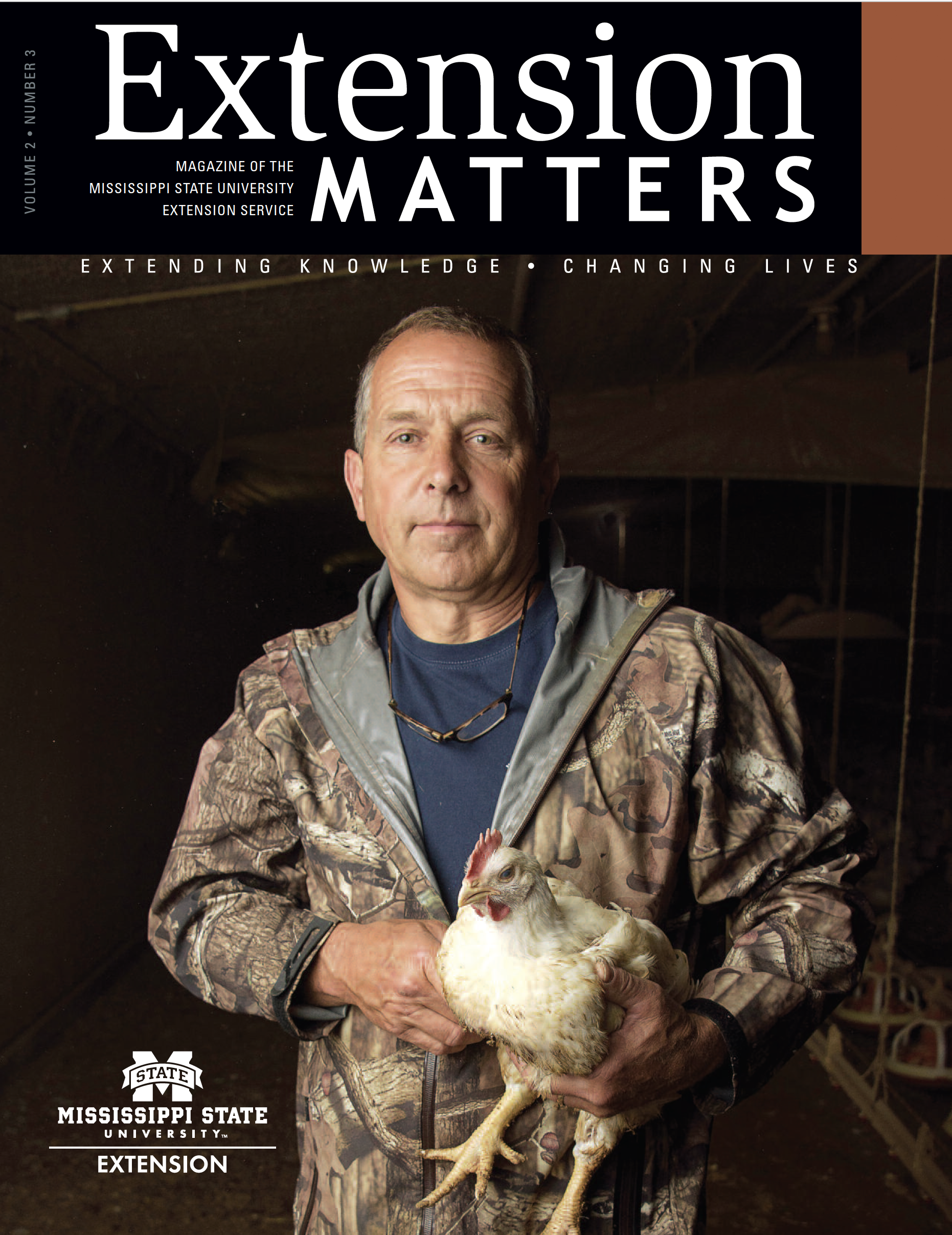New Ways to Water

David Wade, soybean farmer
Delta soybean producer irrigates his fields, increases yields
Another beautiful summer day dawns in the Delta. The sun shines radiantly against the backdrop of clear blue sky.
With no clouds in sight, the chance of a storm blowing up to water the rows is slim. As midday approaches, the bright sunshine continues to beat down, and the soil bakes as the plants wither.
The field’s soil moisture sensors detect the dryness and deliver a quick message to the well’s flow meter. The surge irrigation cycle begins. Thanks to the computerized hole sensors in the polypipe tubing along each furrow, the optimal amount of water flows into the crop’s root systems, and the plants take a deep, thirsty drink.
The freshly watered rows smile up at the sun.
Most of the Delta is already irrigated, but not all farmers are taking advantage of the latest irrigation technologies. However, agents with the Mississippi State University Extension Service are increasing Delta producers’ knowledge— and application—of new, more efficient ways to water the rows.
Extension’s Row-crop Irrigation Science Extension and Research program, or RISER, pioneers the latest strategies to decrease the amount of water used and increase harvest yields. When producers use computerized hole selection, soil moisture sensors, and surge irrigation cycles, the tools decrease the water used and increase crop yields by an average of 25 percent. For irregularly shaped fields, water usage decreases and yield increases by an average of 50 percent.
Clarksdale native David Wade began farming only five years ago, but, from seed selection to irrigation expansion, he knew that the place to go to receive assistance was Extension.
“I was the new kid on the block, and I knew I had to have help at farming,” Wade explains. “So I went to the Extension office to find the right variety of seeds. They gave me materials, they talked with me, and they’ve been just instrumental in helping me ever since, especially with irrigation.”
Wade’s brother had already installed a small well, but it didn’t pump enough water to improve yields of the farm’s main crops, soybeans and wheat. When Wade took over the farm, he made efficient irrigation a top priority, and he partnered with Extension to bring more water to his rows.
“Extension helped me get a grant to put in a new well. Then, we brought in what they call ‘PHAUCET’ (Pipe Hole and Universal Crown Evaluation Tool) with the polyester pipes, and we placed moisture sensors in the ground,” Wade says. “I was able to irrigate about half of the farm."
PHAUCET is a computerized hole selection tool, says Extension Irrigation Specialist Jason Krutz. The free software determines what sizes of holes should be punched in polypipes, and the holes allow a precise amount of water to flow down each furrow.
Wade’s new irrigation system places the well at the top of a slight incline so the water flows down across the rows.
Even though only a section of his farm irrigated with the latest technologies, Wade’s harvest has already increased. He is also better protected from the impacts of drought. Patience is key, he says, and he is continuing his work with Extension, especially Coahoma County Extension agent Don Respess, to irrigate the entire farm.
“I’m going to need to do some land leveling. To do irrigation like this, you have to take certain steps, and you need certain kinds of equipment to irrigate it and irrigate it right,” he continues. “I’m taking it little by little so I can do it right.
“Extension has all the expertise that I need to be able to irrigate, and it’s a great program that I will continue using.”
Extension Agents and Faculty Modernizing Delta Irrigation
Row-Crop Irrigation Science and Extension Research (RISER) tools include:
Computerized Hole Selection
- Decreases the amount of water needed to irrigate plants.
- Applies water based on the furrow’s length and the soil’s characteristics.
- Can improve harvest yields 15%-50%.
Surge Irrigation
- Alternates wetting and drying cycles.
- Pushes water to the back of the field.
- Decreases tail water.
- Minimizes deep percolations where water gets behind the rooting zone.
Soil Moisture Sensors
- Determine where water is needed, accounting for
- depth.
- the active rooting zone.
- infiltration depth.
Riser Soybean Irrigation Results*
For regularly shaped fields…
25% faster growth; less fuel; less water.
$10 savings per acre.
For irregularly shaped fields…
50% faster growth; less fuel; less water.
$20 savings per acre.
*numbers presented are averages


